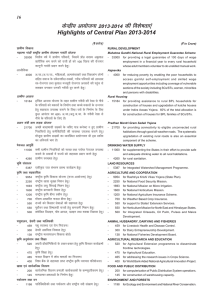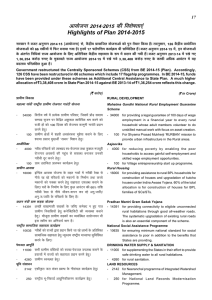Magneto-roton and Universal Features of the Fractional Quantum Hall Effect
advertisement
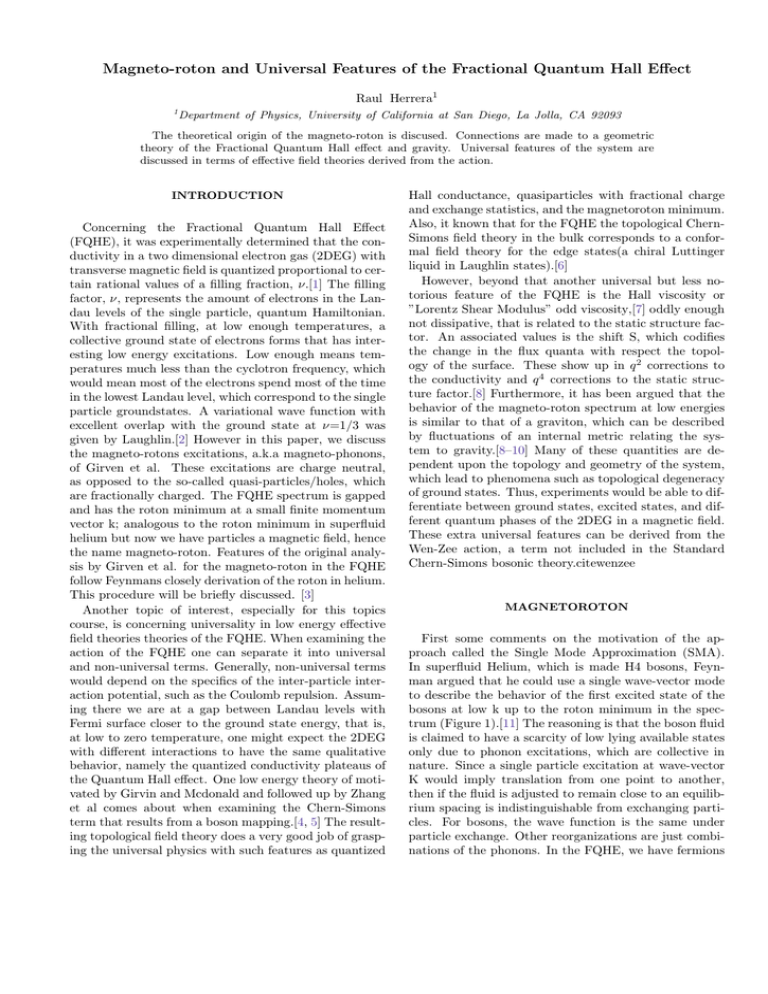
Magneto-roton and Universal Features of the Fractional Quantum Hall Effect Raul Herrera1 1 Department of Physics, University of California at San Diego, La Jolla, CA 92093 The theoretical origin of the magneto-roton is discused. Connections are made to a geometric theory of the Fractional Quantum Hall effect and gravity. Universal features of the system are discussed in terms of effective field theories derived from the action. INTRODUCTION Concerning the Fractional Quantum Hall Effect (FQHE), it was experimentally determined that the conductivity in a two dimensional electron gas (2DEG) with transverse magnetic field is quantized proportional to certain rational values of a filling fraction, ν.[1] The filling factor, ν, represents the amount of electrons in the Landau levels of the single particle, quantum Hamiltonian. With fractional filling, at low enough temperatures, a collective ground state of electrons forms that has interesting low energy excitations. Low enough means temperatures much less than the cyclotron frequency, which would mean most of the electrons spend most of the time in the lowest Landau level, which correspond to the single particle groundstates. A variational wave function with excellent overlap with the ground state at ν=1/3 was given by Laughlin.[2] However in this paper, we discuss the magneto-rotons excitations, a.k.a magneto-phonons, of Girven et al. These excitations are charge neutral, as opposed to the so-called quasi-particles/holes, which are fractionally charged. The FQHE spectrum is gapped and has the roton minimum at a small finite momentum vector k; analogous to the roton minimum in superfluid helium but now we have particles a magnetic field, hence the name magneto-roton. Features of the original analysis by Girven et al. for the magneto-roton in the FQHE follow Feynmans closely derivation of the roton in helium. This procedure will be briefly discussed. [3] Another topic of interest, especially for this topics course, is concerning universality in low energy effective field theories theories of the FQHE. When examining the action of the FQHE one can separate it into universal and non-universal terms. Generally, non-universal terms would depend on the specifics of the inter-particle interaction potential, such as the Coulomb repulsion. Assuming there we are at a gap between Landau levels with Fermi surface closer to the ground state energy, that is, at low to zero temperature, one might expect the 2DEG with different interactions to have the same qualitative behavior, namely the quantized conductivity plateaus of the Quantum Hall effect. One low energy theory of motivated by Girvin and Mcdonald and followed up by Zhang et al comes about when examining the Chern-Simons term that results from a boson mapping.[4, 5] The resulting topological field theory does a very good job of grasping the universal physics with such features as quantized Hall conductance, quasiparticles with fractional charge and exchange statistics, and the magnetoroton minimum. Also, it known that for the FQHE the topological ChernSimons field theory in the bulk corresponds to a conformal field theory for the edge states(a chiral Luttinger liquid in Laughlin states).[6] However, beyond that another universal but less notorious feature of the FQHE is the Hall viscosity or ”Lorentz Shear Modulus” odd viscosity,[7] oddly enough not dissipative, that is related to the static structure factor. An associated values is the shift S, which codifies the change in the flux quanta with respect the topology of the surface. These show up in q 2 corrections to the conductivity and q 4 corrections to the static structure factor.[8] Furthermore, it has been argued that the behavior of the magneto-roton spectrum at low energies is similar to that of a graviton, which can be described by fluctuations of an internal metric relating the system to gravity.[8–10] Many of these quantities are dependent upon the topology and geometry of the system, which lead to phenomena such as topological degeneracy of ground states. Thus, experiments would be able to differentiate between ground states, excited states, and different quantum phases of the 2DEG in a magnetic field. These extra universal features can be derived from the Wen-Zee action, a term not included in the Standard Chern-Simons bosonic theory.citewenzee MAGNETOROTON First some comments on the motivation of the approach called the Single Mode Approximation (SMA). In superfluid Helium, which is made H4 bosons, Feynman argued that he could use a single wave-vector mode to describe the behavior of the first excited state of the bosons at low k up to the roton minimum in the spectrum (Figure 1).[11] The reasoning is that the boson fluid is claimed to have a scarcity of low lying available states only due to phonon excitations, which are collective in nature. Since a single particle excitation at wave-vector K would imply translation from one point to another, then if the fluid is adjusted to remain close to an equilibrium spacing is indistinguishable from exchanging particles. For bosons, the wave function is the same under particle exchange. Other reorganizations are just combinations of the phonons. In the FQHE, we have fermions 2 with a Fermi surface that allows a continuum of many single particle states in its vicinity. However, the magnetic field forces the kinetic energies to be quantized as the Landau levels. In limits of zero temperature and large magnetic field, corresponding to energies much less than the 2nd Landau Level of hwc, we expect the electrons to be confined in the Lowest Landau level, also known as quenching. This is the argument of Girvin, Macdonal and Platzman. Furthermore, for the low lying theory we are not concerned with collective excitations above the Lowest Landau level, so Girvin et al. projected their operators down to the Lowest Landau level. This is the assumption of no Landau Level mixing. It leads to the following analysis, where the functions and operators will depend on a single mode k. I present part of the derivation of Girven et. al with only minor adjustments for clarity.[3] First in anology to Feynman for superfluid helium, an excited state will be of the form: φk (~ri ) = N −1/2 ρk ψ(~ri ) where N is the number of particles, ψ(~ri ) is the ground state, ρk is fourier transform of the following density operator: ~ = ρ(R) N X Thus, ∆(k) is the expectation value of energy offset from the ground state, so it represents a gap. To project to the lowest landau level recall that the charged particle in a magnetic field maps to a 2D har~ = −B ẑ,the monic oscillator. In the symmetric gauge, B functions for the degenerate ground states within the lowest Landau level are analytic functions f (z = x+iy) times a common Gaussian factor in |z|2 = zz ∗ : Φm (z) = 2 1 z m e−|z| /4 2π2m m! The general prescription of the projection is to replace z* which is not analytic: d z ∗ −→ z¯∗ = z † = 2 dz Generally this makes the operators messier by adding extra derivative terms. For example, for the density projection, first write it in terms of z and z ∗ , that is use z = x+iy and k = kx + iky , so: ρ= N X e−i ∗ +k∗ z ) (kzj j 2 i=1 Then the projected density is then: ~ − ~ri ) δ (R 2 ρ̄ = i=1 N X e ∂ −ik ∂z j e −ik∗ zj 2 i=1 and Z ρk = ~ ~ ~ 2R = e−ik·R ρ(R)d N X ~ e−ik·~ri i=1 As a check, this state is orthogonal to the ground state: Z ~ ~ −1/2 ~ ~ hφk |ψi = N e−ik·R hψ|ρ(R)|ψi d2 R = N −1/2 hψ| N X ~ e−ik·~ri |ψi = 0 i=1 Since we expect the ~ri to be spread out uniformly about PN ~ the origin for a homogeneous fluid, the sum i=1 e−ik·~ri vanishes, as it is periodic in sine and cosine. Note: Operator ~ri becomes a number when it acts on |Ψi in the position basis. The energy spectrum ∆(k) is given by the following forumula. s(~k) is the static structure factor, which in this case also equals the norm of the so far un-normalized wave function, so: where the derivative is said to be normal ordered by going first. For more details I refer to the original analysis in Girvin et al.[3] After also projecting the Hamiltonian and the structure factor one gets the spectrum: ¯ = ~ωc ∆(k) k 2 l2 /2 2m(1 − e− k 2 l2 2 ) ~ where the we have the magnetic length scale l2 = mω . c Graphing this gives the desired spectrum with the roton minimum; a numerical study by Haldane and Rezayi is shown in Figure 1.The exact ground state for the Coulomb potential has not been found but the feature has been verified numcerically for small number of particles.[12] Since the roton minimum is universal, it should appear for the different quantum phases corresponding to different filling, as well as systems with different hamiltonians, which it does in numerical studies.[3] s(~k) = hφk |φk i = N −1 hψ|φ†k φk |ψi CHERN-SIMONS AND BEYOND ∆(k) = f (k) hφk |H − E0 |φk i = hφk |φk i s(k) where f (k) = hψ|H − E0 |ψi is called the oscillator strength, as in ~ω, and E0 is the ground state energy. The previous analysis has generally used canonical Quantum Mechanics techniques, also called first quantization, as opposed to field theory or ”second quantization”. In the following analysis I discuss a mapping to 3 FIG. 1: Figure 1. Numerical results of Haldane and Rezayi for ν = 1/3 spectrum with roton minimum at kl=1.4 quantum field theory using a bosonic field theory approach applied by Wen and Zee.[13] These composite bosons attach to magnetic flux tubes. At the special fillings they condense to a superfluid. The quasiparticle excitations are vortices, where as the magnetoroton is a vortex-antivortex pair. Given the Quantum Hall Hamiltoninan (electrons interacting pairwise in a magnetic field), we can Legendre transform to a Lagrangian, hence getting an action. Transforming the action to bosons we get certain terms that have interesting symmetries. Hoyos and Son using scaling arguments of the derivatives in a parameter expansion and find that the leading order term is the Chern-Simons term[14]: SCS ν = 4π Z dtd2 xµνλ Aµ ∂ν Aλ Here Aµ is an electromagnetic vector potetnial. It describes composite bosons, that is bosons attached to magnetic flux tubes. Further, it does not depend on a metric so describes a topological field theory. From this one can derive Hall conductivity and the properties low lying particle excitations. There is another term, SW Z of second order in the action that contains universal information, Hoyos and Son in their analysis of Hall viscosity call it the Wen-Zee term, since they analyzed it originally. Define eai , a=1,2 are veilbeins (local normal vectors) and εij = ab eai ebj . It is in terms of the spin connection: ω0 = ωi = 1 ab aj ( e ∂ 0 ebj ) 2 1 ab aj b ( e ∂ i ej − εjk ∂ j gik ) 2 where gij = eai eaj is the metric and: SW Z κ = 4π Z dtd2 xµνλ ωµ ∂ν Aλ From this term, we can derive another universal quanity, that is, the Hall viscosity, usually η. Also, note that ν is again the filling fraction and κ = 12 νS, where S is stll the shift.The shift and Hall viscosity are proportional, although according to Son not necessarily dynamically (at nonzero frequency). This Wen-Zee term in some sense goes beyond topology into geometry, since it is dependent on the metric. In this same vein, Son and Haldane have separately claimed that the magneto-roton corresponds to a graviton since in their geometric theories it is coupled to a rank 2 tensor (the internal metric), which corresponds to a spin 2 particle.[9, 10] According to Son, these two terms described are art of the universal part of the action, whose properties will not depend on the specifics of the original interparticle interaction. Another field theory approach by Fradkin et al. uses a Chern-Simons action with composite fermions, first introduced by Jain, which instead of composite boson superfluidity describes the quantum hall phases as Integer Quantum Hall effects of quasi-particles in a new effective (screened) magnetic field, which corresponds to the observed fractional quantum hall states for the regular electrons.[15, 16] The effective magnetic field comes about because the fermions or bosons get magnetic fluxes attached to them eating up part of the field, which is described by the Chern-Simons term. For explicit details of how these derivaitons occur, I found that Fradkin’s book has a good treatment of bosonic and fermionic Chern-Simons theory in the FQHE.[17] The extra WenZee term is treated along with the other term originally by Wen and Zee, who derived from it the shift. It is also discussed in papers by Hoyos and Son or Haldane, as mentioned above, or by Read for a slgihtly different interpretation.[18] Theoretically, many of these quanties are terms in the momentum series expansion of the static structure factor. In a related paper by Weigmann et al., they relates the shift and filling fraction to something called the gravitational anomaly, which is proportional to the curvature.[19] Using conformal field theory, they study how the correlations of the density of the quantum hall fluid relate to curvature getting the structure factor to q 6 for different FQHE states. CONCLUSIONS The neutral excitations in the Fractional Quantum Hall effect were discussed. These along with the fractionally charged ones are part of a set of universal features of these systems, such as quantized non-dissipative conductivity, conductivity plateaus at rational filling fraction and constant non-dissipative Hall viscosity, which can be experimentally measured. We briefly mentioned the relation of the magneto-roton to the graviton. In some sense it seems that Fractional Quantum Hall systems, besides being concrete experimentally, also provide 4 a simpler model for how the rest of the universe might work. At different energy scales we see the physics of the system dominated by different effective theories that is the neutral magnetorotons, the quasi particles, and the electrons themselves with increasing energy respectively. The mentioned field theory methods were historically derived with hindsight and furthermore are effective theories, so approximate in some sense. Nevertheless looking deeper, corrections to the Chern-Simons theory give further universal properties along with non-universal ones. The approach is quite elegant in the search for interesting, universal properties of the underlying theory. Acknowledgements I’d like to thank Edward Rezayi for discussions on the magneto-roton. [1] D. C. Tsui, H. L. Stormer, and A. C. Gossard, Phys. Rev. Lett. 48, 1559 (1982), URL http://link.aps.org/doi/ 10.1103/PhysRevLett.48.1559. [2] R. B. Laughlin, Phys. Rev. Lett. 50, 1395 (1983), URL http://link.aps.org/doi/10.1103/PhysRevLett.50. 1395. [3] S. M. Girvin, A. H. MacDonald, and P. M. Platzman, Phys. Rev. B 33, 2481 (1986), URL http://link.aps. org/doi/10.1103/PhysRevB.33.2481. [4] S. M. Girvin and A. H. MacDonald, Phys. Rev. Lett. 58, 1252 (1987), URL http://link.aps.org/doi/10.1103/ PhysRevLett.58.1252. [5] S. C. Zhang, T. H. Hansson, and S. Kivelson, Phys. Rev. Lett. 62, 82 (1989), URL http://link.aps.org/doi/ 10.1103/PhysRevLett.62.82. [6] X. G. Wen, Phys. Rev. B 41, 12838 (1990), URL http: //link.aps.org/doi/10.1103/PhysRevB.41.12838. [7] N. Read, Phys. Rev. B 79, 045308 (2009), URL http: //link.aps.org/doi/10.1103/PhysRevB.79.045308. [8] D. Son, Newton-cartan geometry and the quantum hall effect, arxiv.org/1306.0638. [9] G. Siavash, D. X. Nguyen, and D. Son, Spectral sum rules and magneto-roton as emergent graviton in fractional quantum hall effect, arxiv.org/abs/1309.2638. [10] F. D. M. Haldane, Phys. Rev. Lett. 107, 116801 (2011), URL http://link.aps.org/doi/10.1103/ PhysRevLett.107.116801. [11] R. P. Feynman, Phys. Rev. 94, 262 (1954), URL http: //link.aps.org/doi/10.1103/PhysRev.94.262. [12] F. D. M. Haldane and E. H. Rezayi, Phys. Rev. Lett. 54, 237 (1985), URL http://link.aps.org/doi/10.1103/ PhysRevLett.54.237. [13] X. G. Wen and A. Zee, Phys. Rev. Lett. 69, 953 (1992), URL http://link.aps.org/doi/10.1103/ PhysRevLett.69.953. [14] C. Hoyos and D. T. Son, Phys. Rev. Lett. 108, 066805 (2012), URL http://link.aps.org/doi/10. 1103/PhysRevLett.108.066805. [15] J. K. Jain, Phys. Rev. Lett. 63, 199 (1989), URL http: //link.aps.org/doi/10.1103/PhysRevLett.63.199. [16] A. Lopez and E. Fradkin, Phys. Rev. B 44, 5246 (1991), URL http://link.aps.org/doi/10.1103/ PhysRevB.44.5246. [17] E. Fradkin, Field Theories of Condensed Matter Physics, 2nd Ed. (Cambridge University Press, New York, 2013), chap. 6-7,9-15. [18] N. Read and E. H. Rezayi, Phys. Rev. B 84, 085316 (2011), URL http://link.aps.org/doi/10. 1103/PhysRevB.84.085316. [19] T. Can, M. Laskin, and P. Wiegmann, Fractional quantum hall effect in a curved space: Gravitational anomaly and electromagnetic response, arxiv.org/abs/1402.1531v1.
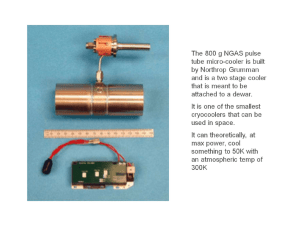
![[1]. In a second set of experiments we made use of an](http://s3.studylib.net/store/data/006848904_1-d28947f67e826ba748445eb0aaff5818-300x300.png)
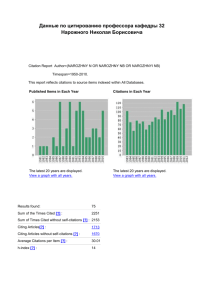



![Syllabus for PHYS 230 “Advanced Solid State Physics” [Winter 2009]](http://s2.studylib.net/store/data/010899141_1-b3f594788de320e649f180a04717b729-300x300.png)

